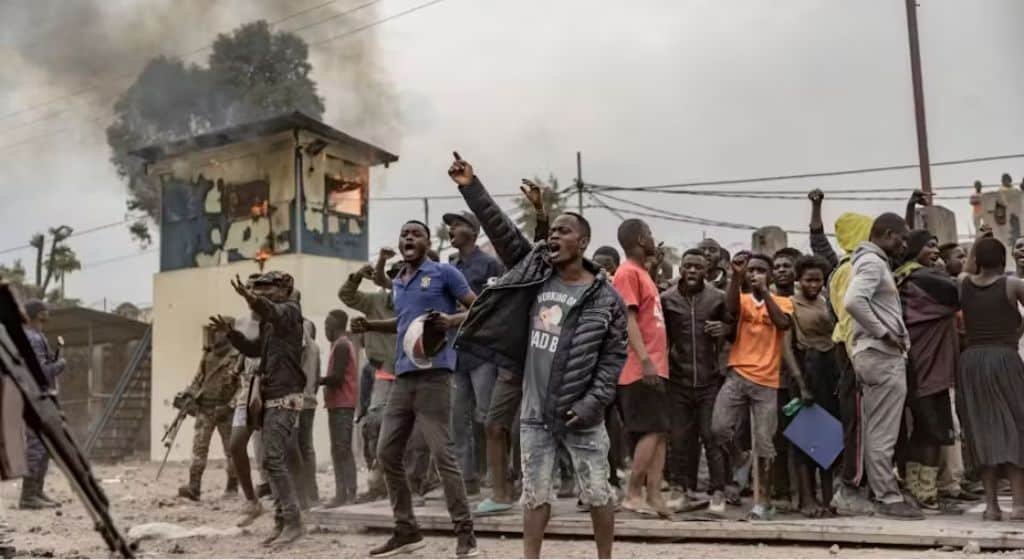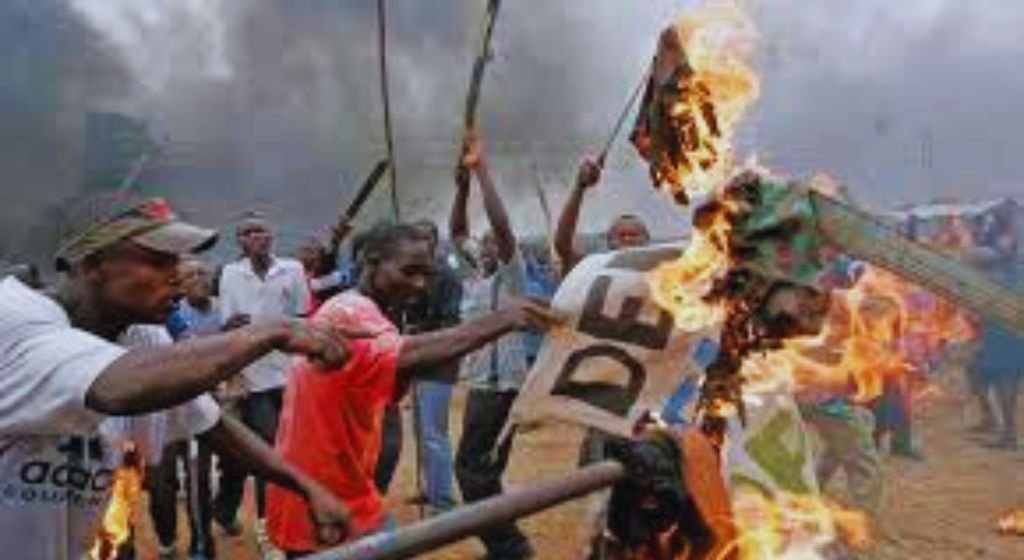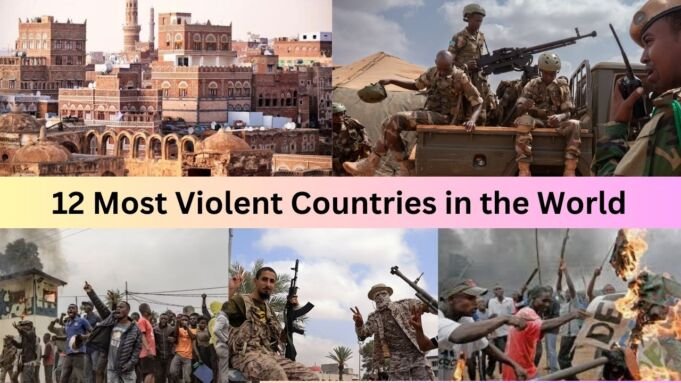Are you looking for the most violent countries in the world? Violence manifests in numerous forms around the globe, impacting millions through armed conflict, criminal activity, and state aggression. This article delves into the countries plagued by extreme violence, exploring the underlying factors and the profound consequences on global stability and human security.
We define violence in varied contexts, from direct conflict-related deaths to broader measures including crime rates and violations of human rights.
What Defines Violent Countries?
Violence is an unfortunate reality that spans several dimensions—political, criminal, and communal. These manifestations can occur as isolated events or as part of a broader systemic issue within societies. Political violence includes war and terror acts, criminal violence often refers to personal or property crimes, and communal violence can arise from ethnic or religious tensions.
The global impact is devastating, with societies facing destabilization, economic decline, and widespread fear and trauma.
Countries with High Levels of Armed Conflict
Countries such as Syria and Yemen represent the severe impacts of prolonged armed conflicts. These nations experience daily casualties and massive displacements, painting a grim picture of the human cost of war.
The international community’s response, including sanctions, peacekeeping missions, and humanitarian aid, has varied in effectiveness, often hampered by political complexities and competing interests.
Related: Safest Countries in The World
Countries with High Crime Rates
In nations like Honduras and Venezuela, violent crime rates significantly exceed global averages, with homicides and armed robberies creating an atmosphere of fear and instability. Factors such as economic instability, corruption, and inadequate policing contribute to these high rates.
Efforts to combat these problems include community policing initiatives and international cooperation to tackle drug trafficking and gang violence.
The 12 Most Violent Countries in the World
The levels of violence in countries can be measured by various indicators such as conflict-related casualties, homicides, or systemic state violence. Below, we explore the 12 most violent countries in the world based on these metrics.
1. Syria

Syria has been ravaged by civil war since 2011, resulting in hundreds of thousands of deaths and massive displacement. Despite attempts at ceasefires and peace talks, fighting continues between government forces, various rebel groups, and international factions. The humanitarian crisis remains severe, with widespread destruction of infrastructure and a desperate need for basic necessities.
2. Afghanistan

Afghanistan has endured decades of conflict, involving internal factions, Taliban insurgencies, and international interventions. The situation has led to severe loss of life and displacement, with security and stability remaining elusive. Despite peace initiatives, violence continues to affect millions of Afghans, complicating efforts towards rebuilding and reconciliation.
3. Yemen

The conflict in Yemen, exacerbated by external military interventions and a civil war beginning in 2015, has turned it into one of the world’s worst humanitarian crises. The violence has devastated the health infrastructure, led to famine conditions, and caused countless civilian casualties.
4. Somalia

Somalia has faced long-term instability due to ongoing conflicts involving clan factions, Al-Shabaab militants, and government forces. The violence has disrupted essential services and development, leading to humanitarian crises and making Somalia one of the most challenging environments for aid operations.
5. Iraq

Iraq’s violent landscape is shaped by years of conflict, including the U.S.-led invasion in 2003, subsequent sectarian violence, and the rise and fall of ISIS. Despite significant efforts to stabilize the country, violent attacks remain common, severely impacting civilian life and national security.
Read More: Happiest Countries in the World
6. South Sudan

Since gaining independence in 2011, South Sudan has experienced intermittent civil wars and tribal violence, leading to thousands of deaths and widespread displacement. Efforts to maintain peace agreements have frequently failed, perpetuating a cycle of violence and instability.
7. Central African Republic (CAR)

The CAR has struggled with political and communal violence since its independence. The situation escalated in 2013 with conflicts between the Seleka rebel coalition and anti-Balaka militias, causing severe civilian casualties and displacement.
8. Libya

Following the 2011 overthrow of Muammar Gaddafi, Libya has been marked by chaos and violence with multiple factions, including tribal groups and Islamist militants, vying for control. This instability has resulted in significant civilian suffering and has turned Libya into a hub for migrant trafficking and a gateway for migrants attempting to reach Europe.
Read Also: Wealthiest Countries in the World
9. Democratic Republic of the Congo (DRC)

The DRC has been plagued by violence for decades, with numerous armed groups fighting over control of valuable mineral resources. The violence has resulted in millions of deaths and displacements, with ongoing conflicts in eastern regions continuing to disrupt peace and development efforts.
10. Sudan

Sudan has experienced multiple conflicts, including the Darfur genocide and recent clashes in South Kordofan and Blue Nile states. The political landscape remains volatile following the ousting of President Omar al-Bashir in 2019, with continued violence threatening the transitional processes.
11. Nigeria

Nigeria faces multiple sources of violence, including Boko Haram insurgencies in the northeast, communal conflicts in the Middle Belt, and militant actions in the Niger Delta. These conflicts have led to thousands of deaths and displaced communities, severely affecting the nation’s development.
12. Mexico

While not afflicted by conventional warfare, Mexico struggles with extreme levels of drug-related violence. Cartel battles, government anti-drug operations, and related criminal activities have resulted in high homicide rates and significant law enforcement challenges.
Read More: Largest Country in the World
State-Sponsored Violence
Certain regimes have perpetuated violence against their own citizens to maintain control or suppress opposition. Countries like North Korea and Myanmar are notable for such actions, which include political repression, forced disappearances, and other human rights abuses. International human rights organizations and the United Nations often find themselves grappling with diplomatic barriers when attempting to intervene.
Factors Contributing to Violence
The root causes of high violence levels are complex and multifaceted. Economic disparity, political turmoil, weak judicial systems, and cultural factors often converge to create environments where violence flourishes. Additionally, illegal activities such as arms trafficking and the narcotics trade play significant roles in exacerbating these issues.
Impact of Violence
The immediate effects of violence—death, injury, and destruction—are just the beginning. Long-term impacts include psychological trauma, economic downturns, and the breakdown of social fabric. Communities ravaged by violence may struggle with development for decades, as seen in regions like sub-Saharan Africa and parts of Latin America.
To Know More: Most Visited Country in the World
Global and Regional Initiatives to Reduce Violence
Several global initiatives aim to address and mitigate violence. The United Nations’ peacekeeping missions, although sometimes criticized, have achieved some success in maintaining ceasefires and protecting civilians. Regionally, initiatives such as ASEAN’s conflict mediation efforts show promise in preventing disputes from escalating. However, the success of these programs is often hindered by a lack of funding, political will, and on-the-ground complexities.
Conclusion
The scourge of violence in the world’s most afflicted countries is a complex issue that demands a multifaceted approach to resolution. Understanding the underlying causes is the first step toward crafting effective interventions. Global cooperation and a commitment to addressing economic, social, and political disparities are crucial in the quest for peace. As the international community continues to wrestle with these challenges, the hope remains that through sustained effort and collaboration, a more peaceful world can eventually be achieved.
Frequently Asked Questions (FAQs) about Violent Countries in the World
Here are commonly asked questions (FAQs) about violent countries in the world, providing insights into common queries related to this critical issue:
What makes a country “violent”?
Violence in countries is typically characterized by factors such as high homicide rates, ongoing armed conflicts, widespread criminal activities, and significant instances of state-sponsored aggression. These indicators help identify regions where safety and security are severely compromised.
How are the most violent countries determined?
The most violent countries are often identified through data collected by international organizations such as the United Nations, the World Bank, and various NGOs. These organizations look at statistics on homicide rates, conflict casualties, and reports of human rights abuses to compile their rankings.
Which region has the highest concentration of violent countries?
Historically, regions such as Sub-Saharan Africa, the Middle East, and parts of Latin America have shown higher levels of violence due to a combination of political instability, economic challenges, and ongoing conflicts.
What are the common causes of violence in these countries?
Common causes include political corruption, economic disparity, lack of effective governance, historical conflicts, and external interventions. Socio-economic factors such as poverty and unemployment also significantly contribute to heightened levels of violence.
What impact does violence have on the citizens of these countries?
Violence has profound impacts, including loss of life, severe injuries, psychological trauma, and displacement. Economically, it leads to lower investment, hindered development, and destruction of infrastructure, further exacerbating poverty and instability.
What are international bodies doing to help violent countries?
International bodies and coalitions often engage in peacekeeping missions, provide humanitarian aid, and support conflict resolution initiatives. They also work to impose sanctions on regimes that perpetrate violence and provide platforms for diplomatic negotiations.
How can one help or get involved in supporting people in violent countries?
Individuals can support through donations to credible NGOs that operate in these regions, advocating for policy changes in their own countries, and raising awareness about these issues. Volunteering with organizations that provide aid and support to affected populations is another way to make a significant impact.















